ISSN ONLINE(2278-8875) PRINT (2320-3765)
ISSN ONLINE(2278-8875) PRINT (2320-3765)
| Tanay Chowdhury1, Dayaram Gora2, Vikash Yadav3, A. R. Suryawanshi4 Dept. of E&TC, Pimpri Chinchwad College of Engineering, Pune, Maharashtra, India |
| Related article at Pubmed, Scholar Google |
Visit for more related articles at International Journal of Advanced Research in Electrical, Electronics and Instrumentation Engineering
AUTO FARMER is one of the mean machine project. In the world of increasing population the demand for increase in growth of the food increases, this demands greater productivity with greater quality. The aim of AUTO FARMER USING RENEWABLE ENERGY is to provide automation and create a imprint in the field of agriculture. Today the farming underwent many difficulties like depending on rain, the restless manual work and the efforts
Keywords |
||||||||
| RENEWABLE ENERGY ,AVR Atmega 16L,Soil Moisture sensor,liquid level sensor | ||||||||
INTRODUCTION |
||||||||
| Automation involves mechanism of all the industrial activities so as to improve the speed of production, reduction of cost, effective use of resources. Automation is the use of control systems such as computers, microcontrollers. | ||||||||
LITERATURE SURVEY |
||||||||
| In the world of man and machines there is a revolutionary change of machines dominating the world of man. AUTO FARMER is one of the mean machine project. Improving irrigation efficiency can contribute greatly to reducing production costs of vegetables, making the industry more competitive and sustainable. Through proper irrigation, average vegetable yields can be maintained (or increased) while minimizing environmental impacts caused by excess applied water and subsequent agrichemical leaching. Recent technological advances have mades oil water sensors available for efficient and automatic operation of irrigation systems. Automatics oil water sensor-based irrigation seeks to maintain a desired soil water range in the root zone that is optimal for plant growth. The target soil water status is usually set in terms of soil tension or matric potential (expressed in kPa or cbar, 1 kPa=1 cbar), or volumetric moisture (expressed in percent of watervolume in a volume of undisturbed soil). Another benefit of automatic irrigation techniques is convenience. In a previous experience working witha soil-moisture-based automatic irrigation system, Dukes et al. (2003) found that once such a system isset up and verified, only weekly observation was required. This type of system adapts the amount of water applied according to plant needs and actual weather conditions throughout the season. This translates not only into convenience for the manager but into substantial water savings compared to irrigation management based on average historical weather conditions. | ||||||||
BLOCK DIAGRAM |
||||||||
| AVR is used to control all the peripherals. One soil moisture sensor is used to sense the moisture content of the soil. The liquid level sensor is used to sense the level of water in the tank. The data from these sensors are fed into AVR which controls the switching of the water pump hence the flow of water to the fields.The perforated pipes are used for dripping water. In this way the automatic irrigation of fields is accomplished. | ||||||||
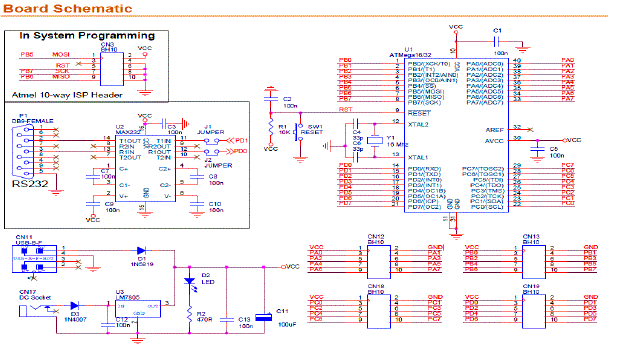 |
||||||||
FEATURES |
||||||||
| • High-performance, Low-power Atmel® AVR® 8-bit Microcontroller | ||||||||
| • Advanced RISC Architecture | ||||||||
| – 131 Powerful Instructions – Most Single-clock Cycle Execution | ||||||||
| – 32 x 8 General Purpose Working Registers | ||||||||
| – Fully Static Operation | ||||||||
| – Up to 16 MIPS Throughput at 16 MHz– On-chip 2-cycle Multiplier | ||||||||
| • High Endurance Non-volatile Memory segments | ||||||||
| – 16 Kbytes of In-System Self-programmable Flash program memory | ||||||||
| – 512 Bytes EEPROM | ||||||||
| – 1 Kbyte Internal SRAM | ||||||||
| – Write/Erase Cycles: 10,000 Flash/100,000 EEPROM | ||||||||
| – Data retention: 20 years at 85°C/100 years at 25°C(1) | ||||||||
SOIL MOISTURE CONTENT SENSOR PROBE – SERIAL + ANALOG OUT |
||||||||
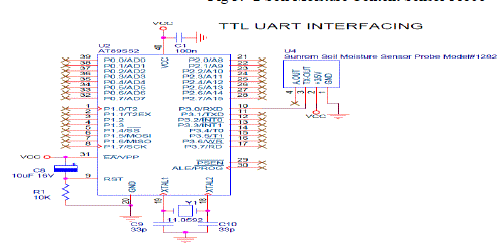 |
||||||||
| Specifications | ||||||||
 |
||||||||
| Pin outs | ||||||||
 |
||||||||
| LIQUID SENSOR | ||||||||
| Specification | ||||||||
 |
||||||||
OVERVIEW |
||||||||
| To make a Auto farming system using renewable energy, in which entire process controlled by the microcontroller and supply is given by renewable energy source. Soil moisture sensor will sense the soil’s moisture whose output is given to the microcontroller and it will take appropriate action depending on the output of Soil moisture sensor.Liquid level sensor must be used to sense the level of the water.It also regulates the flow of liquid fertilizer reaching the field. | ||||||||
| This is shown below: | ||||||||
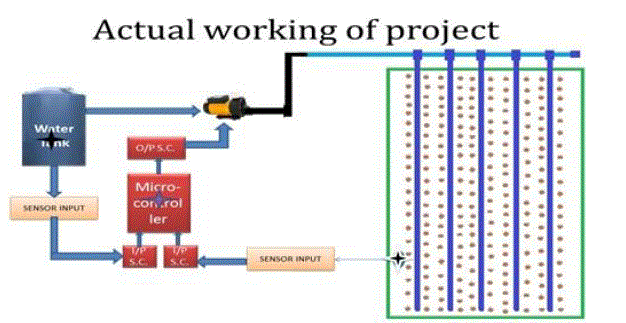 |
||||||||
| 1) The soil moisture sensor was tested using a handkerchief; it was checked for repeatability by slowly wetting the cloth as shown below. | ||||||||
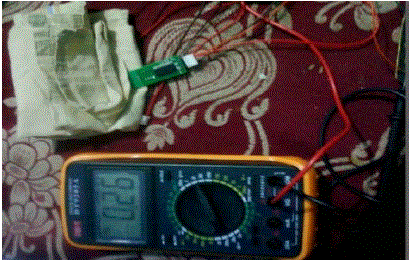 |
||||||||
| 2) The pump was tested as shown below. | ||||||||
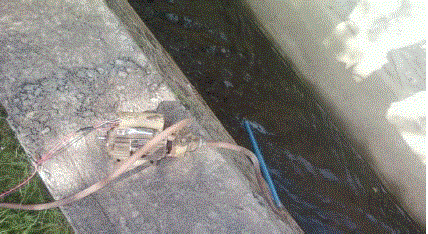 |
||||||||
| 3) The overall circuit was tested on the field as shown below. | ||||||||
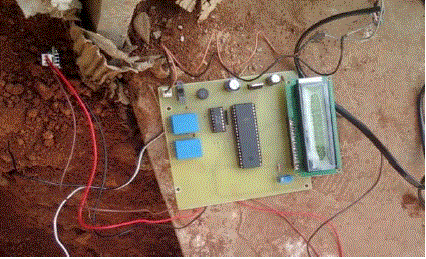 |
||||||||
SIMULATION RESULTS |
||||||||
| Power supply layout on PCB Wiz | ||||||||
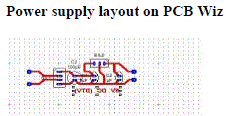 |
||||||||
| layout design of project on proteus | ||||||||
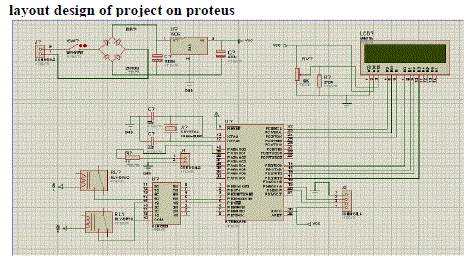 |
||||||||
CONCLUSION |
||||||||
| This technology in future will enable the farmer to control & view farming direction from home through various methods like internet, mobile.The farm can be protected from animals, fire and any anonymous person entering the field.Insects can be detected and avoided.Growth of crops can be informed to the farmers. | ||||||||
Figures at a glance |
||||||||
|
||||||||
References |
||||||||
|